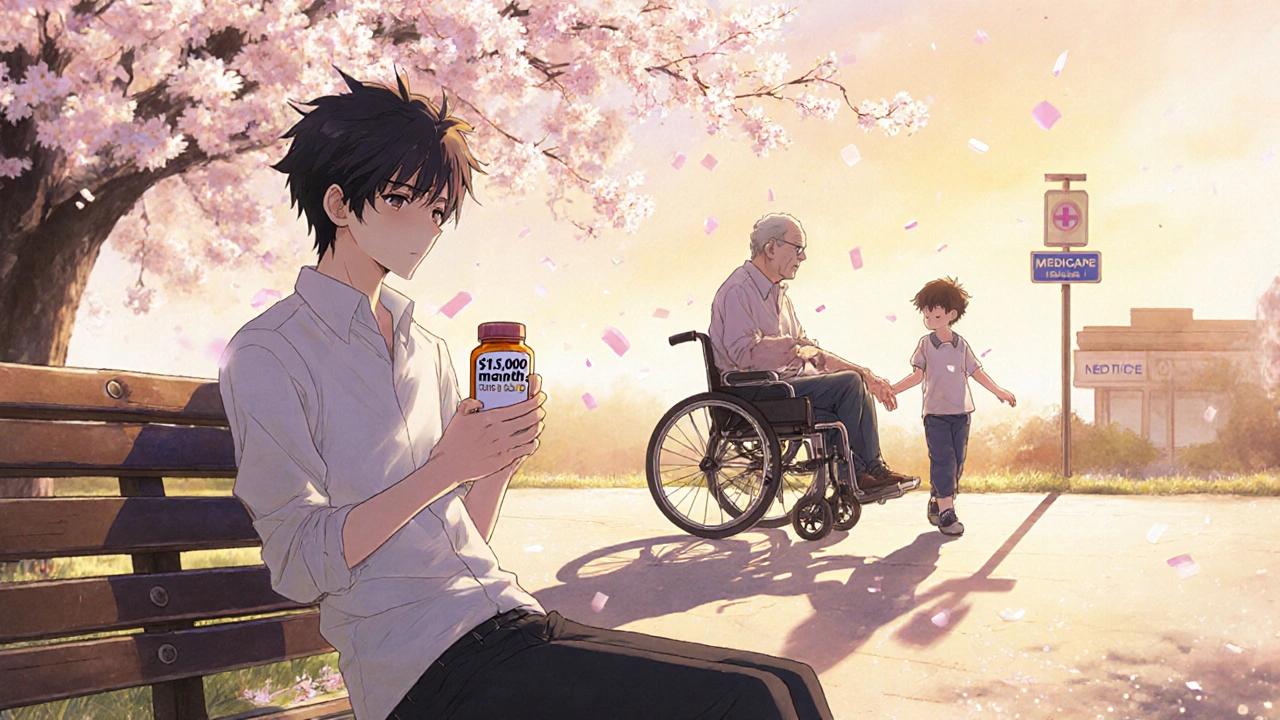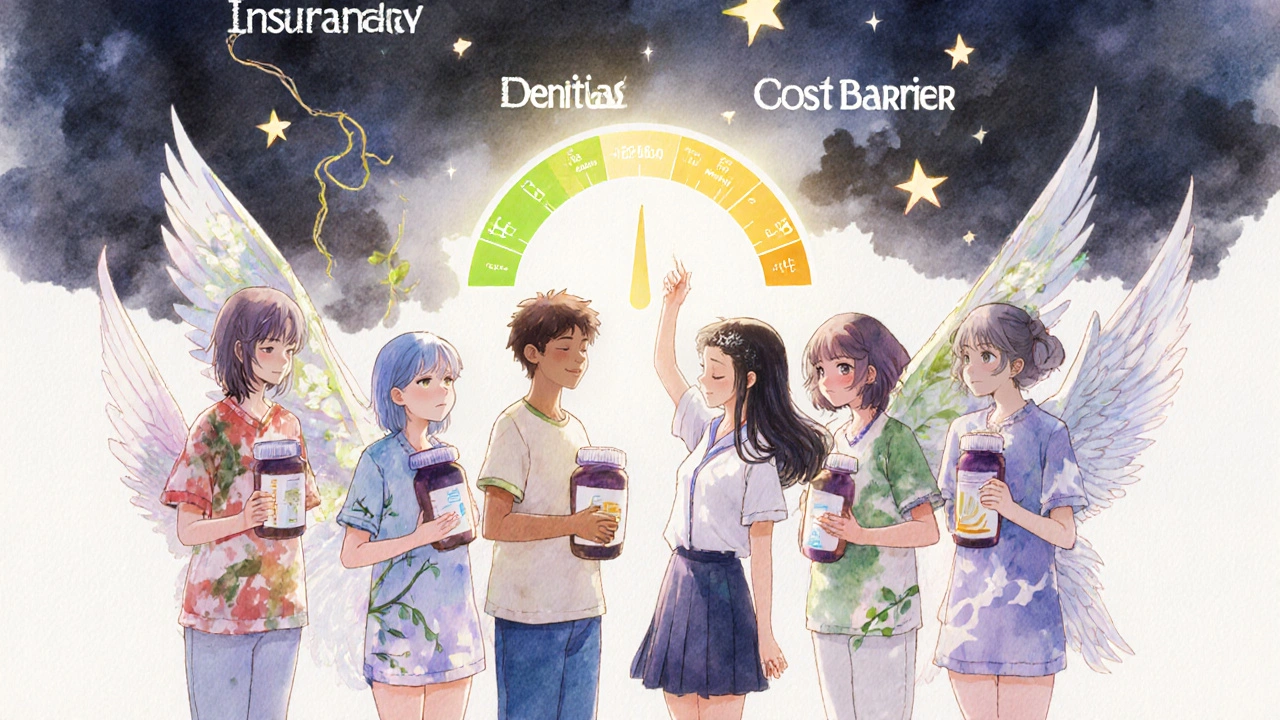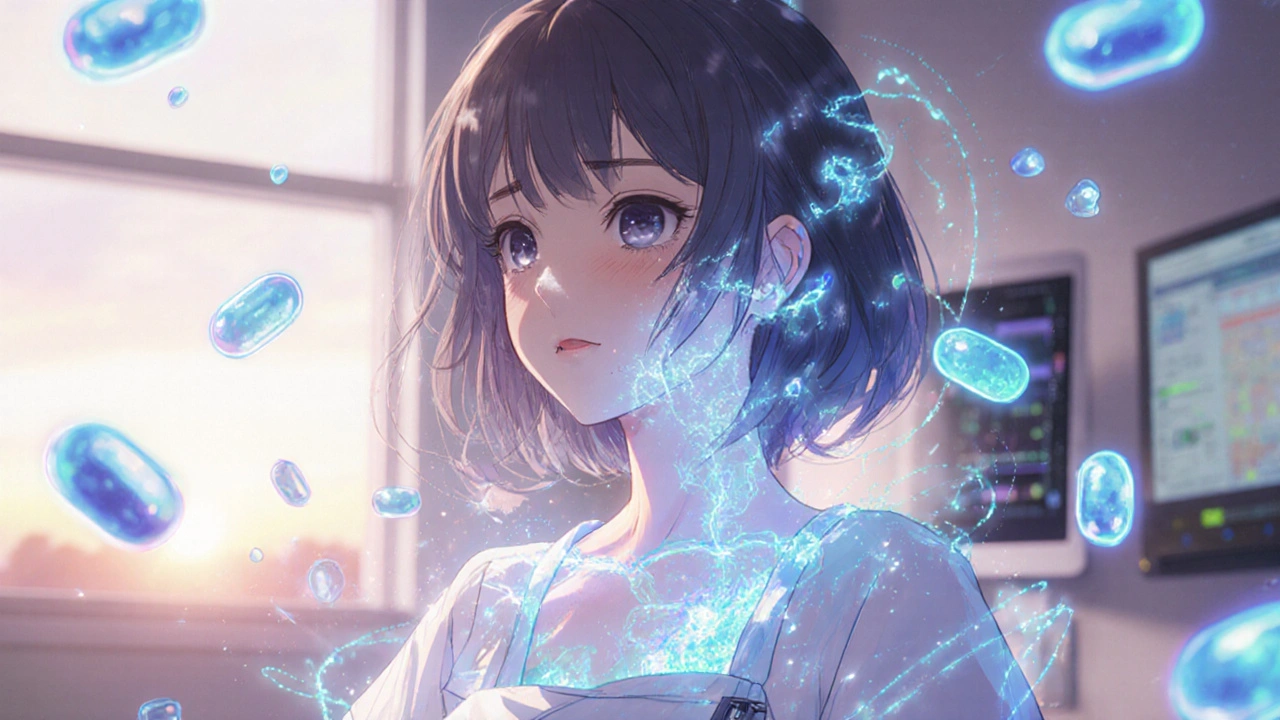Medication Cost-Benefit Calculator
Calculate Your Treatment Value
Use this tool to understand if expensive medications offer value by comparing cost to quality of life improvements and life extension.
Results
When a drug costs more than a car, or even a year’s rent, it’s hard not to ask: is this worth it? Especially when the side effects are brutal - nausea that won’t quit, immune system crashes, or hospitalizations just to manage the treatment itself. But for some people, these ultra-expensive medications aren’t just an option - they’re the only thing standing between them and death, or a life they can no longer live.
Why Do Some Drugs Cost So Much?
The price tags on modern medicines aren’t random. Many of the most expensive drugs are biologics, gene therapies, or treatments for rare diseases. These aren’t your typical pills you pick up at the corner pharmacy. They’re made from living cells, engineered in labs with precision, and often designed for just a few thousand patients worldwide. The Orphan Drug Act of 1983 gave companies financial incentives to develop treatments for rare conditions - and it worked. But it also created a market where one dose of a drug can cost over $16,000, and a full course might run into the hundreds of thousands. In 2023, the median cost of the 50 most expensive drugs covered by U.S. federal programs was $16,177 per dose. Thirty-one of them were biologics. Sixteen were small molecules. Three were gene therapies. And 72% of them were approved specifically for rare diseases. That’s not a mistake. It’s the business model.Side Effects Aren’t Just Inconvenient - They’re Part of the Deal
No drug is without risk. But with expensive treatments, the side effects often come with higher stakes. Take CAR-T cell therapy for leukemia - a one-time treatment that can cost nearly $500,000. It reprograms your own immune cells to hunt down cancer. For many, it’s the last hope after chemotherapy failed. But the side effects? Cytokine release syndrome - a violent immune overreaction that can cause high fever, low blood pressure, and organ failure. Most patients need ICU-level care for days after treatment. Yet in a 2023 patient forum from the American Society of Clinical Oncology, 78% of people who received CAR-T therapy said it was worth it. Why? Because they were dying. Or they were living in constant pain. Or their cancer kept coming back. The side effects were terrifying, but the alternative was worse. Same goes for hepatitis C drugs like Harvoni. In 2016, a full course cost over $80,000. Patients paid thousands out of pocket. But compared to the old treatment - weekly interferon injections that caused severe flu-like symptoms, depression, and fatigue for a year - with only a 50% cure rate - Harvoni offered a 95% cure in just 12 weeks. No shots. No hospital visits. Just a daily pill. The cost was high. The benefit was life-changing.How Do We Decide What’s Worth It?
Doctors don’t make these decisions alone. Health economists use something called the incremental cost-effectiveness ratio - or ICER. It measures how much extra money you spend to gain one additional year of healthy life - called a QALY (quality-adjusted life year). In the U.S., anything under $150,000 per QALY is often seen as acceptable. In the UK, it’s £30,000 (about $38,000). If a drug pushes past that, it gets rejected. But here’s the problem: the U.S. doesn’t enforce these numbers. Medicare can’t negotiate prices for most drugs. Insurance companies decide based on their own rules. And manufacturers? They set prices based on what the market will bear - not what’s fair. Take daratumumab, a multiple myeloma drug. NICE in the UK initially rejected it because its ICER was £120,000 per QALY - way above their limit. After negotiations, the price dropped. The ICER fell to £45,000. It got approved. The drug didn’t change. The price did. That’s the real story behind most expensive medications: value isn’t in the science - it’s in the negotiation.
Who Pays the Price - Literally?
Patients aren’t just paying with their health. They’re paying with their savings, their jobs, their peace of mind. A 2022 survey found that 68% of people taking drugs over $10,000 a month skipped doses because they couldn’t afford them. 42% chose between buying medicine and buying food. For Medicare beneficiaries without low-income help, out-of-pocket costs for drugs like ustekinumab or ruxolitinib ranged from $1,600 to over $5,600 a year - even with insurance. One Reddit user with hemophilia described paying $15,000 a month for emicizumab - a drug that prevents bleeding episodes. Without it, his joints were crumbling. With it, he could walk again. But he had to take a second job just to cover his share. He called it "the price of staying human."When Is It Worth It? Real-Life Scenarios
There’s no universal answer. But here are situations where expensive drugs make sense - even with side effects:- You’ve run out of options. If every other treatment failed - chemo, radiation, surgery - and this is the only thing left, the risk of side effects becomes secondary to the risk of death.
- The side effects are manageable. Some drugs cause fatigue or rashes. Others cause organ damage. The difference matters. A drug that causes nausea you can control with anti-vomiting pills is very different from one that destroys your liver.
- It changes your quality of life. A drug that lets you play with your kids again, go back to work, or stop using a wheelchair? That’s worth more than any price tag.
- It’s curative. Hepatitis C is gone after 12 weeks. Some CAR-T therapies eliminate cancer for years. These aren’t lifelong treatments - they’re one-time fixes. That changes the math.

How to Navigate the System - Even If You Can’t Afford It
You don’t have to pay full price. There are ways to cut the cost - if you know where to look.- Manufacturer assistance programs. Most big drug companies offer copay cards or free medication for low-income patients. On average, they cover 40% of out-of-pocket costs for commercially insured patients.
- Independent foundations. Organizations like the Chronic Disease Fund gave out $2.1 billion in financial aid in 2022 alone. They help with insulin, cancer drugs, autoimmune treatments - anything expensive.
- Specialty pharmacies. These aren’t your local CVS. They handle complex drugs and assign case managers who spend over 3 hours per patient just sorting out insurance approvals. Ask your doctor to refer you.
- Medicare Part D. Learn the phases - initial coverage, the donut hole, catastrophic coverage. You’ll pay less than you think if you understand how it works. The donut hole closed in 2020, but many patients still don’t know it.
The Bigger Picture - Why This Isn’t Just About You
This isn’t just a personal struggle. It’s a system failure. The U.S. spends more on prescription drugs than any other country - nearly $700 billion in 2022. Yet 82% of Americans say drug prices are unreasonable. Meanwhile, countries like Germany and France rate over half of these expensive drugs as having low or no added benefit. The 2022 Inflation Reduction Act gave Medicare the power to negotiate prices for 10 drugs starting in 2026. But 96% of the most expensive drugs are still off-limits. Why? Because the law excludes drugs that are less than 11 years old, or those with no generic alternatives - which is exactly where the highest prices are. The truth? We’re paying for innovation - but we’re also paying for greed. Some drugs deliver miracles. Others deliver tiny improvements at astronomical prices. The system doesn’t distinguish between them.Final Thought: It’s Not About Money. It’s About Choice.
No one wakes up and says, "I want to spend my life savings on a drug that makes me sick." But when you’re staring down a terminal diagnosis, or chronic pain that won’t end, you don’t get to choose the easy path. You choose the one that lets you live. For some, that’s a $500,000 gene therapy. For others, it’s a $10,000 monthly injection that stops their body from attacking itself. The side effects are real. The cost is crushing. But the alternative - giving up - is worse. The question isn’t whether these drugs are worth it. The question is: what kind of society do we want to be? One that lets people die because they can’t afford to live? Or one that finds a way to make miracles accessible - even when they’re expensive?Are expensive medications always better than cheaper ones?
No. Many expensive drugs offer only small improvements over cheaper alternatives. Independent reviewers like Prescrire International found that only 7 out of 100 new drugs in 2023 provided major therapeutic progress. Some ultra-expensive cancer drugs, for example, extend life by just a few weeks with severe side effects - while older, cheaper drugs work nearly as well. Price doesn’t equal effectiveness.
Why don’t insurance companies cover all expensive drugs?
Insurance companies use formularies - lists of approved drugs - and often require "step therapy," meaning you must try cheaper options first. They also use prior authorization, which can delay treatment for weeks. Many expensive drugs are excluded because their cost per quality-adjusted life year (QALY) exceeds what insurers consider acceptable, even if they’re clinically effective.
Can I get financial help for a drug that costs $10,000 a month?
Yes. Most drug manufacturers offer copay assistance programs that can reduce your out-of-pocket costs by 40% or more. Foundations like the Chronic Disease Fund and Patient Access Network (PAN) provide grants to cover premiums, copays, and coinsurance. Specialty pharmacies also assign case managers to help you apply for aid - you just have to ask your doctor to refer you.
Do side effects always mean the drug isn’t worth it?
Not at all. Side effects matter, but context matters more. A drug that causes fatigue or nausea may be manageable with other medications. A drug that causes liver failure or permanent nerve damage is riskier. But for someone with no other options - like a terminal cancer patient - even severe side effects may be acceptable if the treatment gives them months or years of life they wouldn’t otherwise have.
Will drug prices come down in the future?
Slowly, and only for some. Medicare will begin negotiating prices for 10 high-cost drugs starting in 2026, but 96% of expensive drugs are currently excluded from this process. The European Union is moving toward joint drug evaluations by 2025, which could pressure U.S. prices. But without strong cost-effectiveness rules, manufacturers will continue to set prices based on what the market will bear - not what’s fair.


Comments (11)
Beth Banham
Just saw a friend go through CAR-T last year. She was in the hospital for three weeks, couldn't eat, couldn't sleep, but she's alive. And she's playing with her grandkids again. I don't know if it's fair, but I know it's real.
That's the thing nobody talks about - it's not about the cost. It's about the silence after the diagnosis. The quiet. The waiting. And then… something that gives you back a breath.
Alyssa Salazar
Let’s be real - this isn’t healthcare, it’s pharmaceutical oligarchy. Biologics cost $500K because they can, not because they should. ICER? That’s a corporate fig leaf. NICE in the UK negotiated prices down - why can’t we? We’re not paying for innovation, we’re paying for monopoly rent.
And don’t get me started on those ‘copay cards’ - they’re just a Band-Aid on a hemorrhage. The system is rigged.
Jim Oliver
Wow. So the solution is…? Let’s not pretend this is a moral crisis. It’s an economic one. And the answer isn’t ‘make it cheaper’ - it’s ‘stop pretending every $100K drug is a miracle.’
7 out of 100 new drugs actually matter. The rest? Glorified placebos with better marketing. You want fairness? Start by cutting the fat - not the patients.
Amber O'Sullivan
I had to choose between my meds and my rent last year. I skipped doses. I got sick again. I didn't cry. I just stared at the ceiling. People talk about 'choice' like it's a luxury. It's not. It's survival.
Brierly Davis
Man. This hit hard. I’ve seen too many friends go through this. One guy got on a $15K/month drug for MS - now he’s hiking again. Side effects? Yeah, he’s got brain fog and can’t drive at night. But he’s alive.
It’s not about the money. It’s about not being a ghost. I’m glad you laid this out. We need more of this talk.
Rashmi Mohapatra
u think its bad in usa? in india we dont even have access to these drugs. my cousin died of cancer because the medicine was 10lakh rupees. no insurance. no help. just prayers. why we pay so much for drugs? its scam.
Lashonda Rene
Okay so I read this whole thing and I just… I don’t know. Like, I get it. I really do. My aunt had that hepatitis C drug and she was like, ‘I feel like a new person’ - and she had been so tired for years. But then I think about how my neighbor had to sell her car to pay for her insulin. And I just feel… heavy.
It’s not fair. But I don’t know what to do. I just want people to stop acting like it’s normal that someone has to choose between medicine and food. That’s not a system. That’s a nightmare.
Ankit Yadav
There’s a quiet truth here: the most expensive drugs aren’t always the best - but they’re often the only ones that work when everything else fails.
That’s why we need a tiered system. Not ‘all drugs are equal’ - but ‘if this is your last hope, you shouldn’t have to mortgage your life for it.’
Manufacturers need profit. But patients need dignity. We can build a system that honors both. It just takes courage.
Alyssa Fisher
What if we stopped measuring value in QALYs and started measuring it in humanity?
That woman who paid $15,000 a month for emicizumab? She didn’t buy a drug. She bought the ability to hug her daughter without fear. To walk to the mailbox. To not be a burden.
How do you put a price on that? You can’t. And that’s why this system is broken - because it tries to reduce life to a spreadsheet.
Meghan Rose
Wait - so you’re saying if you’re rich, you get to live? And if you’re poor, you just… die slowly? That’s not a healthcare system. That’s a class war disguised as medicine.
And don’t give me that ‘manufacturers need to recoup R&D’ crap. Most of these drugs are funded by taxpayer money anyway. The NIH paid for the science. Then the pharma companies took it, slapped on a 5000% markup, and called it innovation.
Wake up.
Andy Slack
My dad’s on a $40K/year drug for rheumatoid arthritis. He can hold his grandkids now. He used to cry just getting out of bed.
Yeah, the side effects suck. He gets dizzy. His hair’s thinning. But he’s here.
So I’m not mad at the drug. I’m mad at the system that makes this a gamble.
And yeah - I’m angry. But I’m also grateful. That’s the weird, ugly truth.